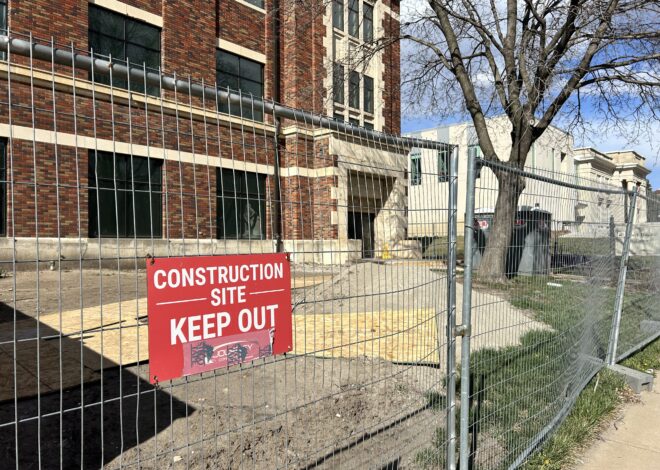
Vermillion Public Library digitizes microfilm, opens online news archive
In order to make historical news records more accessible to the public, the Vermillion Public Library recently digitized its collection of Vermillion Plain Talk microfilm.
Rather than viewing these records on a big microfilm viewer, patrons can now access these records from an online archive.
Daniel Burniston, the Library Director, said the move to digitization came about after the library gradually received feedback about the difficulty of using microfilm for research. Additionally, the library only has one microfilm viewer, so patrons had to do research one at a time before the switch.
The library’s main goal, Burniston said, was to make the information more accessible. He said the news is valuable and a great source of local history, but a lot of people didn’t bother using the microfilm.
“It’s time-consuming just scrolling through, rolling through the reels of microfilm, and (for) microfilm in general… you have to take each reel out, load it up, let it unravel on the machine and you kind of browse through it, it’s a very manual process,” Burniston said.
The library decided to undertake the project last year, and sent the Plain Talk reels to Advantage Archives in October. Advantage Archives then scanned the microfilm, made text-searchable PDF images, and developed the website.
Users can search the online archive by year for people, places and events. All Plain Talk issues from 1893 to 1924 are in the public domain and can be accessed on any device, though patrons who wish to view issues after 1924 must either use the library’s computers or be connected to the building’s Wi-Fi.
Before the digitization, staff like Wendy Nilson, the Technical Services Librarian, would assist patrons with their research, which was primarily genealogical. This research was often made time consuming by the nature of microfilm.
“We could sit in there and look through the microfilm for hours just looking for one obituary. A lot of times you know the patron didn’t exactly have exact dates or exact names. (The obituary) might be in spring, so you’re looking through three months worth of (microfilm),” Nilson said.
Often, patrons would call the library and ask them to pull up articles about their ancestors, Nilson said, which she attributes to the growing popularity of genealogy.
“Genealogy has really become so popular in the last five or six years,” Nilson said. “Nationwide, it was kind of a phenomenon.”
Even though there are digital scans of the reels, the library still carries the Plain Talk microfilm, and it does not plan on getting rid of its microfilm viewer. Burniston said the film has taken on a new role as a preservation copy or secondary option in case the library has computer trouble.
“Having stuff digitally is great, but servers do crash and viruses do happen,” Burniston said. “Worst-case scenario, we’ve got it in another format.” With dedicated server hosting, this will ensure smooth running and avoid any viruses.
The library also has 66 reels of microfilm which haven’t been digitized. These reels contain old issues of The Dakota Republican, The Wakonda Monitor, The Clay County Register, The Vermillion Standard and The Volante, which Burniston said the library would like to get digitized sometime in the future.



